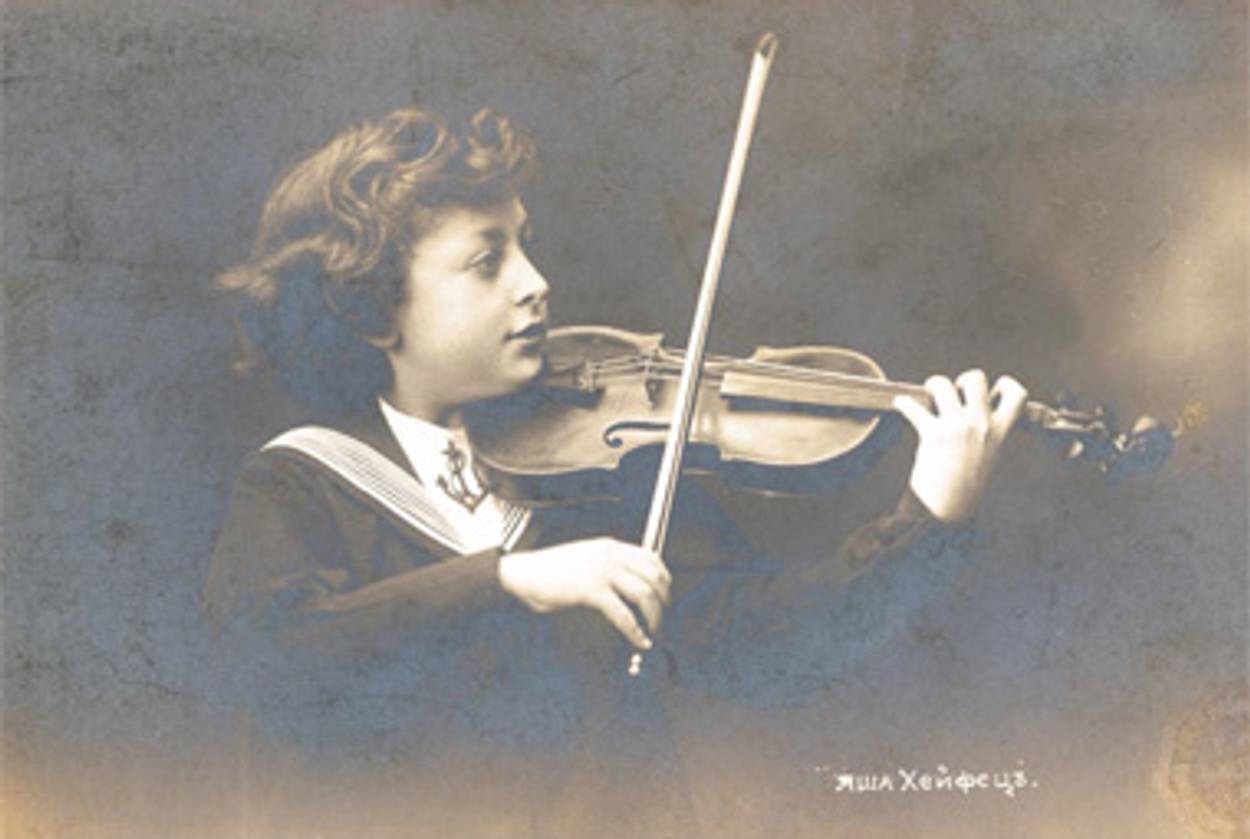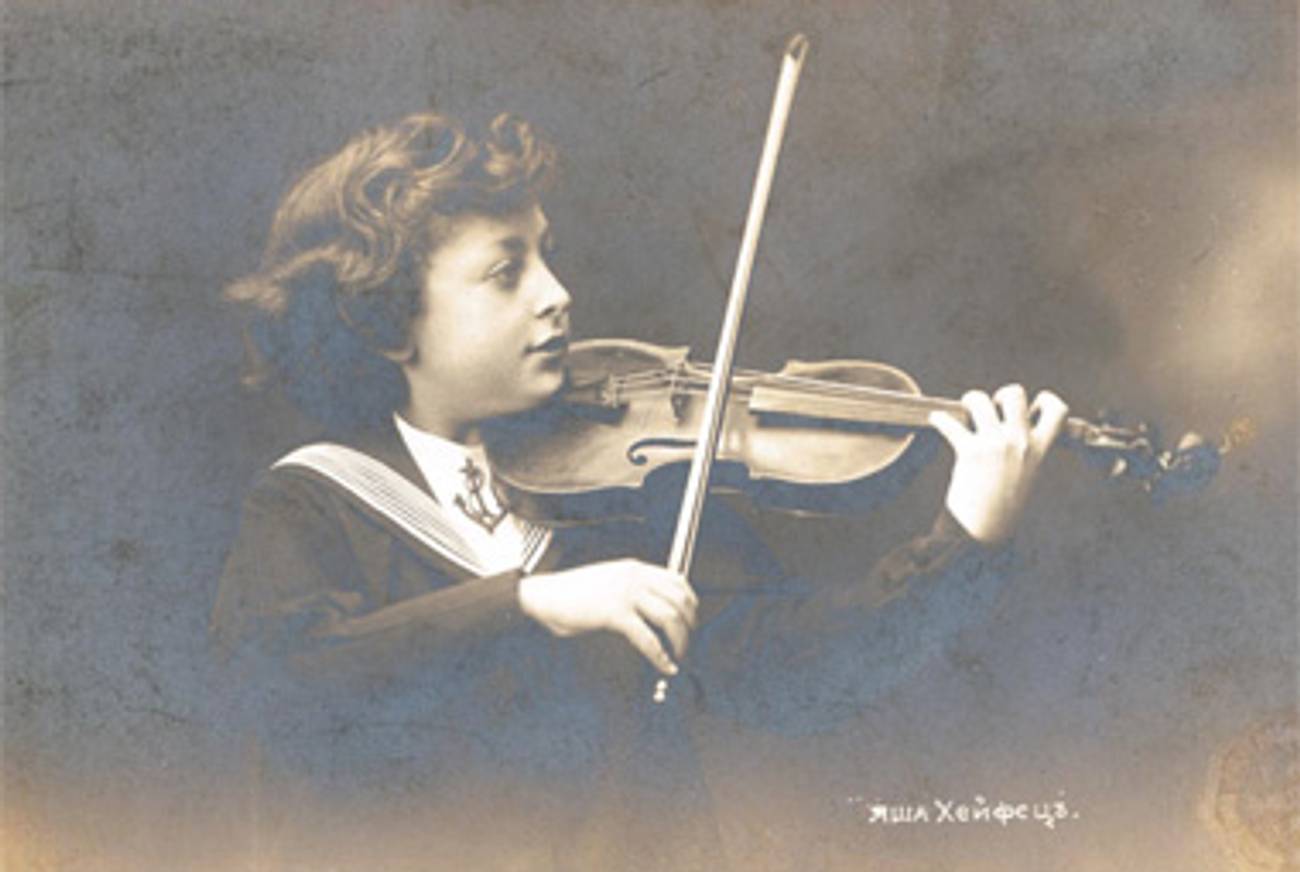Notes From Underground
A new history examines the Jewish role in the musical world of Czarist Russia




In December 1913, the St. Petersburg-based Society for Jewish Folk Music celebrated its fifth anniversary with a competition for the best Jewish opera. The prize was 3,000 rubles, and the response—as James Loeffler writes in his excellent new study, The Most Musical Nation: Jews and Culture in the Late Russian Empire(Yale University Press)—was overwhelming: Submissions flooded in from “Jewish bandleaders in Russian army units … theater musicians, cafe orchestra conductors, big-city synagogue choir directions, and small-town music store owners.” But the most poignant entry Loeffler mentions came from a 19-year-old composer named Aaron Avshalom, who explained that he was the descendant of Caucasian Jews, raised in Siberia by a family with Chinese and Japanese servants, who was now studying medicine in Switzerland. Given this exotic biography, which put him at a great remove from the centers of Jewish life in Eastern Europe, Avshalom apologized if his Jewish opera was not Jewish enough. “My soul sings with Jewish melodies,” he insisted, even as he admitted that “it is altogether possible that there is very little Jewish element” in his work. In any case, he wrote, “I want very much to familiarize myself with the form of Jewish melody.”
A Jewish composer who cannot write Jewish music, who loves Jewish melodies but isn’t sure what makes a melody Jewish: these paradoxes, Loeffler shows, were not confined to the exotic Avshalom. They were at the very heart of Jewish thinking about music in the late 19th and early 20th centuries. And Loeffler, a musician who is also a professor of Jewish history at the University of Virginia, proves that debates about music were, in turn, at the heart of Russian Jews’ attempts to understand their place in the world. Combining the disciplines of history and ethnomusicology, and working with archival sources in Russian, Yiddish, and Hebrew, Loeffler gives substance to his claim that “Jewish musicians, with … their struggle to prove that a Jewish ‘national music’ existed and to determine its proper sound … produced some of the most interesting and heretofore overlooked expressions of Russian Jewish identity.”
The tendency to overlook music in the writing of Jewish history goes back a long way, Loeffler writes—all the way to Simon Dubnow, the pioneering Russian Jewish historian. While Dubnow called for the study of all manner of Jewish sources, from government archives to tombstone inscriptions, he specifically omitted folk music from his purview: “I have not named Jewish folk songs in the list of sources, for the simple reason that we practically have none, at least, none with historical significance.”
This insistence that the Jews had no music of their own was a commonplace of late-19th-century discourse, ironically shared by Jews and anti-Semites. To Richard Wagner, in his notorious essay “Judaism in Music,” it was axiomatic that Jews could not create truly original music, because they were interlopers in European culture. To Jewish nationalists, on the other hand, the music most characteristic of Ashkenazi Jews, from wedding dances to Hasidic melodies, was suspect because it had features in common with the music of neighboring Slavic peoples. In 1915, the Jewish composer Lazare Saminsky launched what Loeffler calls “one of the most important chapters in the history of modern Jewish culture” when he published an essay arguing that only liturgical music was genuinely Jewish—indeed, he believed it could be traced back to the era of the First Temple—while all secular and folk music was a mere import, “little more than ‘Polish folk dances,’ ‘altered versions of German and Ukrainian folk songs,’ and borrowings from ‘Oriental music.’ ” Saminsky employed the disturbing, pseudo-biological rhetoric of the period when he declared that such folk tunes “cannot become the embryos for the growth of national-musical organisms.”
To an age that saw folk music as both a legitimation of national identity and the basis for high art—as in the work of the Czech Dvorak and the Finn Sibelius—the apparent absence of a Jewish musical tradition was both a cultural problem and a political one. It was especially strange because, famously, a huge proportion of Russia’s best musical performers were Jews. One of the central subjects of The Most Musical Nation is the fate of the St. Petersburg Conservatory, which was founded in 1861 by Anton Rubinstein, a baptized Jew who was one of the century’s most famous musicians. Very quickly, the conservatory became a magnet for Jewish students. Not only was it one of the only educational institutions in Russia not to have a Jewish quota, but its graduates enjoyed legal privileges otherwise unattainable for most Jews—for instance, the right to live outside the Pale of Settlement.
As a result, by 1913, Loeffler writes, more than 50 percent of the school’s students were Jewish—this at a time when other universities set a Jewish quota of 3 percent. Isaac Babel, in his famous story “Awakening,” bitterly criticized the mania of Jewish parents in Odessa for turning their children into violin prodigies: “Our fathers, seeing no other escape from their lot, had thought up a lottery, building it on the bones of little children.” Yet there was no denying that, for the winners of this Jewish musical “lottery,” the prize was enormous. Violinists like Jascha Heifetz were world famous, and Loeffler writes that the “line of Jewish violin prodigies eventually became … arguably the single most important phenomenon in the modern history of the classical violin.”
Yet even at the St. Petersburg Conservatory, myths of Jewish creative sterility circulated freely. In an anecdote of his student days, the composer Mikhail Gnesin—who would go on, in Soviet times, to write the first piece of music commemorating the Holocaust—recalled being told by a professor: “among my students, I have had a seriously large number of Jews … they shine fantastically, they perform superbly in the course, technique comes very easily to them. And yet when they leave school they immediately harden, their brains just shut down. They cannot create anything original.”
No wonder, then, that it was students from the St. Petersburg Conservatory who joined together to launch the Society for Jewish Folk Music, an organization dedicated to researching, publishing, and performing the Jewish music that was alleged not to exist. They built on the work of Joel Engel, another central figure in Loeffler’s book, who was one of the first people to study Jewish folk music seriously. Engel was passionate about Jewish music precisely because he had grown up knowing little about Judaism: “I transcribed and studied Jewish melodies not because I was Jewish, but much more the opposite—the more I worked with them, fell in love with them, the more Jewish I became,” he said. In 1912, Engel and the writer S. An-sky launched the landmark Jewish Historical-Ethnographic Expedition, traveling through the Pale of Settlement to record Jewish folk music and culture before it was lost to modernization. Tellingly, Loeffler writes, when Engel and An-sky tried to converse with their coachman, their Yiddish was so bad he would only reply in Ukrainian. Like so many Jewish intellectuals since, they were in search of a Jewishness they no longer possessed.
The work of Engel and the Society helped to popularize Jewish folk music—though, as Loeffler shows, some of the alleged folk tunes were actually published compositions of fairly recent vintage, which had spread so widely that people thought they were traditional. It also helped to inspire new art music by Jewish composers, such as Joseph Achron, whose popular “Hebrew Melody” for violin and piano is the only piece Loeffler subjects to detailed musical analysis. But the work of these Jewish musicians, like that of the Hebrew and Yiddish “culturists” Kenneth Moss wrote about in his recent book Jewish Renaissance in the Russian Revolution, was cut artificially short by the advent of Communism. The surviving members of the Society for Jewish Folk Music dispersed to Israel and the United States, or continued to work under the very different conditions of Stalinism. “In all three places,” Loeffler concludes, “it was primarily the memories, the memoirs, and the reflections on the past that took the place of the music itself.” But then, as The Most Musical Nation shows, the music itself had never been extricable from the thoughts, hopes, and fantasies its listeners imposed on it.
Adam Kirsch is a poet and literary critic, whose books include The People and the Books: 18 Classics of Jewish Literature.
Adam Kirsch is a poet and literary critic, whose books include The People and the Books: 18 Classics of Jewish Literature.